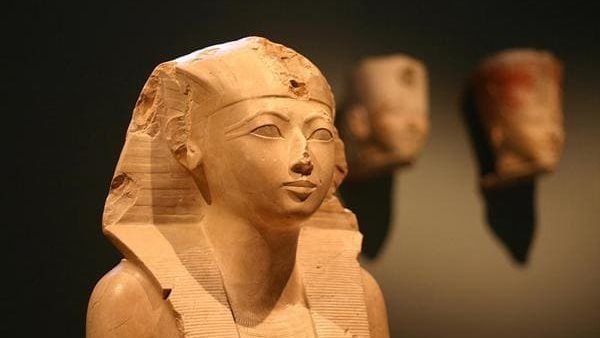Hatshepsut: The First Woman to Form a Political Party and Ascend the Throne of Egypt

Throughout history, Egyptian women have left a remarkable legacy across diverse domains, from governance and science to wisdom and administration. Women were never sidelined from influence or the limelight. In fact, the legitimacy of kings often depended on their marriage to women of royal lineage. Among the most influential queens in history is Queen Hatshepsut, also known as Ghanemet Amun.
The name Ghanemet Amun translates to "Amun's Favorite Consort" or "Jewel of the Princesses." Born in 1508 BCE to King Thutmose I and Queen Ahmose, Hatshepsut was the granddaughter of King Ahmose I, the founder of the 18th Dynasty and the liberator of Egypt from the Hyksos. She initially served as regent but later secured recognition as the queen of Egypt, though her ascent to power was anything but straightforward.
Ancient Egyptian society was predominantly patriarchal when it came to kingship, firmly believing that rulers should be male. Despite the queen’s significant authority, it was rare for a woman to attain absolute power.
Hatshepsut co-ruled Egypt with her father, Thutmose I, and was the rightful heir to the throne. However, Egyptian tradition did not allow a woman to wield full power alone. As a result, her younger half-brother, Thutmose II, was made co-ruler. Hatshepsut was relegated to the role of Great Royal Wife.
For Thutmose II to ascend the throne, it was necessary for him to marry Hatshepsut to maintain the purity of royal bloodlines, a demand orchestrated by the priests of Amun. While Hatshepsut did not immediately ascend to power, Thutmose II proved to be a weak and inexperienced ruler. During his brief reign, he faced a rebellion in the south, which he suppressed with severe force.
It appears that Hatshepsut was the de facto ruler, managing state affairs from behind the scenes. Her influence over the administration was clear, and as Thutmose II’s health deteriorated, his imminent death became apparent. Meanwhile, his son, Thutmose III, who was serving as a priest in the Karnak temples, began preparing to assume the throne.
Even before Thutmose II's death in 1501 BCE, calls for Thutmose III’s reign began to emerge, fueled by the belief that a woman could not rule Egypt. Thutmose III himself stirred public sentiment and the priesthood against the notion of a female ruler. Upon Thutmose II's death, while attending a ceremonial procession at Karnak, Hatshepsut witnessed a dramatic event. As the statue of Amun was being carried on its sacred barque, the procession suddenly halted in front of a young priest. This was interpreted as a divine sign that Amun had chosen the boy, who was none other than Thutmose III, to co-rule with Hatshepsut.
In May 1501 BCE, Thutmose III left his position in the temple and entered the royal palace to share power with his stepmother. This marked the beginning of their rivalry. Hatshepsut, however, consolidated her supporters and formed a political faction. Her party grew so influential that it overshadowed the authority of Thutmose III, ultimately forcing him to yield. In 1478 BCE, Hatshepsut was declared the ruler of Upper and Lower Egypt.
To legitimize her reign, Hatshepsut propagated a story that she was the divine daughter of Amun, born from a union between the god and her mother, Queen Ahmose. This narrative was immortalized on the walls of her famous temple in Deir el-Bahari on the west bank of the Nile.
Despite the tensions with Thutmose III, Hatshepsut ensured his upbringing was focused on military training and statecraft. She entrusted him with leading military campaigns against rebels outside Egypt during the latter years of her reign.
Hatshepsut ruled Egypt for 22 years until her death on January 14, 1457 BCE. A stone stele discovered in Armant records her reign. After her death, Thutmose III ascended the throne, marrying her daughter, Merit-Re Hatshepsut, to secure his legitimacy. He became one of Egypt’s greatest warrior-kings, establishing the first and most powerful Egyptian empire in history.





